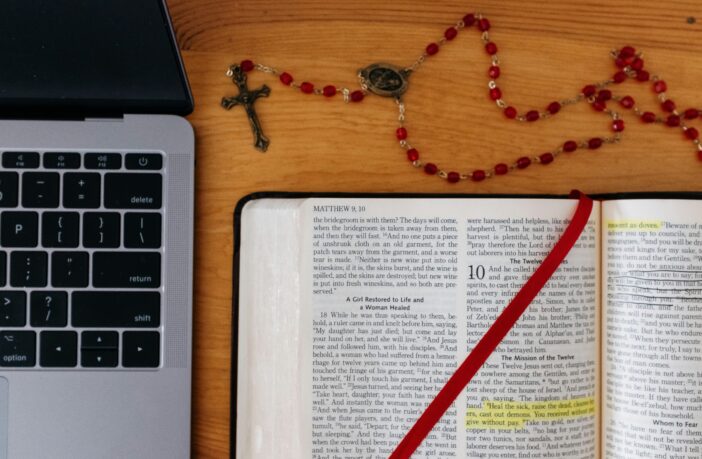By Rev. Dorothy S. Boulware
Word in Black
In March 2020, when the COVID-19 pandemic forced houses of worship nationwide to shut down, both the ministry and congregants adapted to a new, supposedly temporary reality. Like schools and offices, church services would be conducted remotely, streamed over the internet into homes on pandemic lockdown.
When asked, around 9 in 10 parishioners insisted they would return to in-person worship, as soon as the pandemic ended. They missed the handshakes and hugs of in-person fellowship, the resonant sound of the choir, the feel and smell of hymnals.
More than three years after the official end of the pandemic, however, about a third of regular churchgoers haven’t returned to the pews — and only about 2 in 5 Americans regularly participate in church services at all.
Experts say a variety of reasons, ranging from fear of COVID infection to the convenience of watching a streaming service, accounts for the decline in the number of people returning to in-person church attendance. (Photo by Unsplash / Grant Whitty)
A survey shows the situation is a bit more acute when it comes to the Black church, according to Pew Research Center.
“While 13% of Protestants who belong to historically Black churches say they attend church in person and don’t regularly watch services virtually, most say they join services both in person and virtually (37%) or only watch remotely on screens (20%),” according to the Pew report, issued last June.
The data illustrates a conundrum for faith leaders struggling to meet the new reality of a hybrid method of worship.
“Pastoring the virtual church creates an accountability and connection challenge,” says the Rev. Jamal Brown, pastor of Family Restoration Worship Center in Philadelphia. “It’s not dissimilar from the traditional congregation challenges,” but the church as well as the individual bears responsibility for the decline of in-person worship.
Virtual worship “offered people an opportunity to hide from the responsibility of giving time, talent and tenth,” he says, referring to donations and tithing. “However, embracing the virtual church also exposed deficits in the church systems. What existed pre was enhanced in the post virtual church.”
Jason E. Shelton, a sociologist and professor and director of the Center for African American Studies at the University of Texas at Arlington, put a finer point on it in a February interview with Christianity Today.
“The future does not look good for organized religion in Black America, especially the historic traditions,” he said.
“The Baptists are still the largest, but they’re losing people,” he said. “The Methodists are really down small. The Pentecostals are losing, but they’re not losing nearly as many since they’ve always been small.”
The numbers are part of an overall trend of declining church worship in the U.S. According to Gallup, 42 percent of U.S. adults regularly attended church services two decades ago; now, that number has slipped to around 30 percent.
Reasons for the dropoff in attendance vary, according to a Pew Research Center poll. Some former churchgoers are still worried about contracting COVID-19; others say they’re facing new physical challenges that keep them from going to church in person; still others say they prefer worshiping from the comfort of home.
One can hardly argue with the modern comfort and convenience of watching Sunday home worship services, streaming live over a platform like Zoom or Facebook. Yet data from Lifeway Research found that 91 percent of those polled not long after churches shut down said they would return to the pews when the pandemic was no longer a problem.
But “as of the fall of 2022, the average church had 85% of its pre-COVID attendance numbers,” according to the study. A year later, Pew reported 27 percent of U.S. adults faithfully watch services online, compared with roughly a third who regularly attend church in person.
Among Black parishioners, 2 in 10 prefer to watch worship services online at home, according to Pew.
Part of the reason for the dropoff is “continuing concern about COVID-19, which struck Black communities with particular force,” according to Pew. At the same time, however, “viewers who are members of historically Black Protestant churches are more likely to say they feel like active participants in these virtual services than are viewers who belong to some other faiths.”
Realizing what’s at stake, faith leaders are taking steps to draw their flock back into the pews. Some are reaching out to absent congregants in person; others are holding social events. One minister found that offering water baptism was a draw to some.
For Shelton, the University of Texas sociologist, the decline in in-person worship is a worrisome trend for the Black church, an institution with a long, storied history in the community.
“The church has always been the vessel that we as Black people have used to have community and solidarity,” he said. “It’s the church that connects , so as the nones” — Black people with no religious affiliation — “fall away from that, what does that mean for the community? What does that mean for Black music? What does that mean for Black politics? And what does that mean for the long-standing legacy of racial discrimination in this country?”



